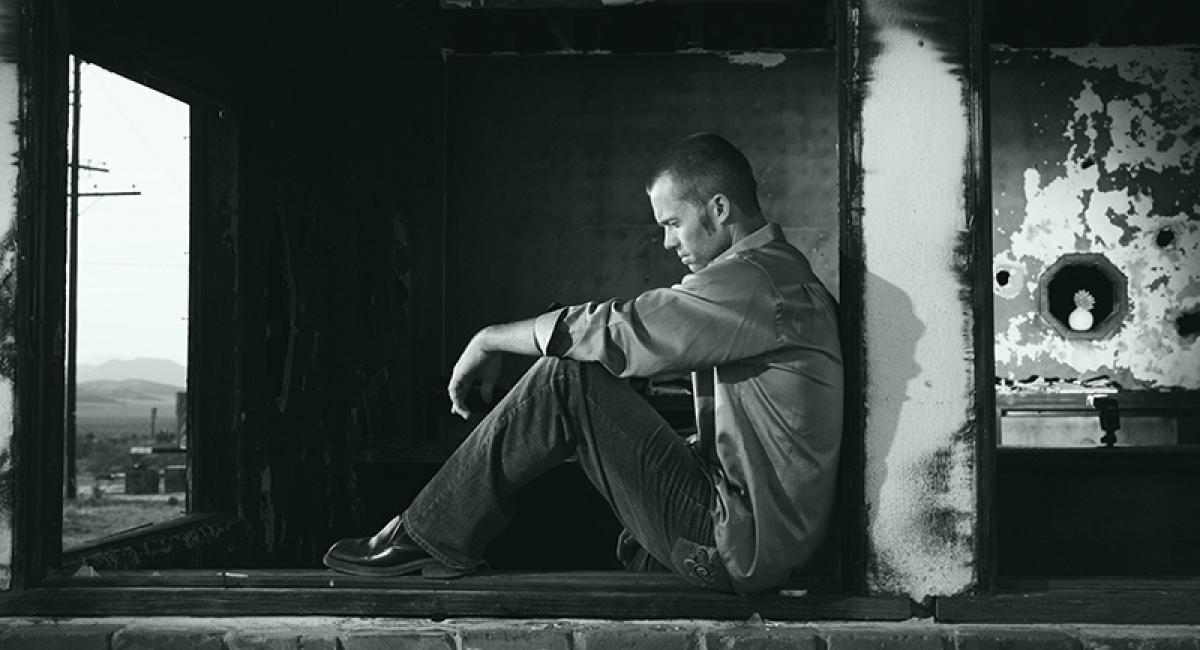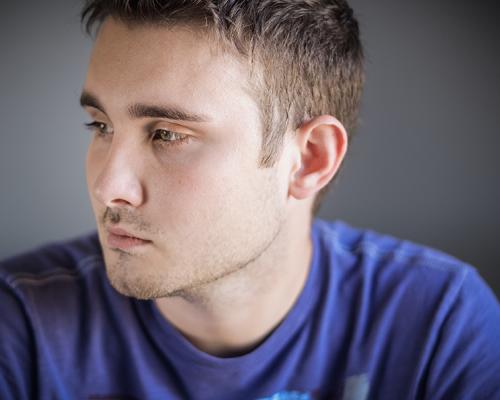Schizophrenia and psychosis
Can schizophrenia be cured?
One curious research finding, which first came to light in the 1960s, is that more people in developing countries recover fully after a first psychotic breakdown than people in developed countries, despite (or maybe because of) far lower use of antipsychotic medication. A consistent finding across many cross-cultural studies, including those sponsored by the World Health Organization, is that, at two-year and five-year follow up, a larger proportion (50–60 per cent) of people in developing countries have experienced a good outcome, compared with people with similar symptoms in developed countries.1
There have also been doubts expressed about the accuracy of such findings – for instance, although complete recovery from psychosis occurred more often in developed countries, rates of chronic illness (by which time it is usually termed schizophrenia) were similar. Also, like might not have been compared with like, as more patients dropped out of trials in developing countries, usually those who were worst affected by their symptoms, and this must have skewed findings to a degree. However, it remains the case that people in developing countries have been shown to experience longer periods of unimpaired social functioning, despite most not being on antipsychotic medication.2
Looking at this last finding from the human givens perspective, we can deduce something highly significant. For example, in developing countries, there is a much stronger tradition of emotional and family support and greater tolerance for personal psychological crisis, which may therefore be less likely to spiral out of control. There are also more low-stress manual and handicraft jobs, and more meaningful tasks that people need to perform for their subsistence, which may facilitate recovery in a close-knit community.
It is much easier, therefore, for people to meet their emotional needs for intimacy, support, status and validation in these situations, than in the culture we have made for ourselves. Clearly, an environment where emotional needs are met is a potent aid for helping people recover from psychological disorders, even ones as seriously incapacitating as the one termed schizophrenia.
As has been pointed out, in developing countries the use of modern antipsychotic drugs to treat psychosis is minimal, whereas in the Western world they are the main treatment offered by the psychiatric profession, despite evidence that these heavily promoted drugs may hinder recovery,3 increase the rate of relapse4 and have a risk of causing brain damage.5
Psychiatric theorists are still at a loss to explain schizophrenia. Conviction that it is caused by specific deficiencies in brain chemistry, such as ‘overactive dopamine systems’, has not been supported by research, despite the strident and misleading claims of some drug companies to the contrary. Some psychiatrists even question whether schizophrenia as a valid diagnosis even exists. One leading researcher into the condition, who over many decades investigated possible causative culprits such as brain abnormalities, dopamine dysregulation, aberrant genes and environmental factors, eventually finding a high impact only for child abuse and other adverse life effects, concluded that the concept that schizophrenia represents any single disease entity is unfounded and is likely to go the way of dropsy (ie vanish from our thinking).6
In our book, Human Givens: An empowering approach to emotional health and clear thinking, we describe how the REM (rapid eye movement) brain state, which underlies dreaming, is separate from the process of dreaming and dream content. We point out that the healthy brain is organised to keep the dream process separate from the waking state, which is why we find it so difficult to remember dreams. We have shown how the behaviour of a person in a hypnotic state clearly mirrors phenomena of the REM sleep state, such as muscle paralysis, dissociation, imperviousness to pain, and amnesia for the event after ‘waking’.
A psychotic breakdown is almost always preceded by an overload of stress and severe depression in a person’s life, which, as is known, very commonly results in excessive REM sleep. We argue that, when people are in psychosis, they are in fact trapped in what we term the REM state, a separate state of consciousness with the same dreamlike qualities. In other words, schizophrenia is waking reality processed through the dreaming brain. These arguments are increasingly supported by brain science.7
To illustrate this, we only have to look at a number of typical psychotic behaviours and experiences and see how they relate to the REM state. Patients in a psychotic state often describe weird relationships with bodily feelings. For instance, one said that her legs felt empty, another that her arms didn’t belong to her. This is a well-known REM state phenomenon and is also noted in hypnosis: people may feel that their bodies are dissolving because, in the dream state, most of our normal sensory perceptions about the body are unavailable to us.
It is also known that people diagnosed with schizophrenia can be unusually resistant to pain, and even more so during severe psychotic episodes. One patient jumped out of a second storey window of a hospital, broke both his ankles, and walked to the shops oblivious of the damage he had done — damage that would have caused excruciating pain for any person in a normal state of mind.
Again, this imperviousness to pain occurs in the REM state while dreaming, as we are cut off from sensory information. (Anyone who has woken up in agony because a limb, or ear, has been lain on in an unnatural way for a long period during dreaming will recognise this. The pain this causes is only noticed after we wake up.) It is this fact that is exploited when hypnosis is used for pain control or anaesthesia during surgery.
Psychotic patients may also talk about hearing voices. In the dream state, mainly the province of the right hemisphere of the brain, people don't tend to arrive at the kind of conclusions (in the form of thoughts) that are mainly the province of the left hemisphere, because the mind is ‘locked’ into the metaphorical script of the dream. But if an individual is trapped in a waking REM state, with waking reality happening around them, there is still likely to be activity in the left hemisphere of the brain.
We suggest that, because the REM state operates through metaphor, the only way people can make sense of these thoughts, which they don't experience as their own, is to create the metaphor of hearing voices, or being watched, or spied upon by aliens — which easily becomes paranoia.
The visual illusions or delusions associated with schizophrenia are totally characteristic of the dream state, which generates hallucinatory realities that we believe in unquestioningly for the duration of the dream. Stage hypnotists make use of this when they put subjects into what is, in effect, a psychotic state, and induce them to believe that they are someone else or that non-existent people and objects exist.
Rapid eye movements are often seen to occur in psychotic states, which, of course, are the defining sign of the REM state. People who are psychotic can also very quickly convert frightening thoughsts into sensory experience, with the result that they can become highly emotional almost instantly. When recalling a distressing memory, for example, they can be instantly transported right back into that memory and re-experience the emotions connected with it. That phenomenon, too, appears characteristic of the dream state, when, as we argue, undischarged emotional arousal triggers a thought pattern, which is immediately converted into a sensory metaphor — the dream.
It is not surprising, then, that psychotic patients not only talk in metaphors but live them out, which explains their often bizarre speech and behaviour.
The REM state is in effect a reality generator. It creates all kinds of perceptions in our dreams, but these are illusory perceptions — vivid metaphors. One psychotic patient actually described herself as “being trapped in the land of illusion”. Indeed, we know from talking to psychotic patients in their saner moments that they readily recognise that they are trapped in a dreaming state.
We suggest that we can use this insight to help people make sense of their psychotic experience. We aim to help psychotic patients dip out of the dream state and activate the areas of their brains more focused on executive functioning, and we do this by the type of questions we ask them, talking directly about what is concerning them, connecting with their metaphors and attempting to change the meanings these hold for them. They can then start to better understand what these represent and, thus, what is happening to them that is causing their distress. As a consequence, they can spend more time in normal, waking reality. (A remarkable letter, sent to us by someone who had had a psychotic breakdown and whose experience resonated with this explanation, appears in our book, Human Givens.)
In our experience of working in this way, we have found that clients with psychosis calm down when they realise there is an explanation for what is happening to them. When calm, the psychotic phenomena become less threatening and less intense. Then we can start doing what many traditional developing countries seem to do so much better than we do — help re-orient people towards getting their emotional needs met and create stronger support structures for them.
Being unhappy, stressed and depressed is a strong predictor of later mental illness. This new understanding of what psychosis is means we can set out some practical guidelines for pre-empting as well as treating it and thereby reduce the prevalence of severe breakdowns and increase the recovery rate dramatically when they do occur.
We are saying, then, that extreme stress, anxiety and depression are most commonly what lead to psychosis, where the patient’s brain can no longer distinguish between the metaphorical reality of the dreaming process and the way a brain normally manages to order reality. If we are right, it follows that, if people were treated more effectively for stress overload and depression by psychotherapists trained to be effective using the human givens approach, the depression would lift in most cases and not degenerate into psychosis.
Because people in a psychotic state are so hypersensitive to metaphor, those working with them need to know how to use language in a way that helps them, reducing their arousal levels with calming metaphors while avoiding the type of metaphors that may remind people of their predicament and flip them back into their psychotic thinking. This is a specialist skill that all human givens practitioners are taught and others can learn. It must also be recognised that, in psychosis, metaphorical language and behaviour represent emotional needs not being met, or that they are attempts to express what it feels like to process waking reality directly through the REM state.
It would make sense for the skills of occupational therapists to be given much greater prominence in the treatment of people struggling with psychosis, who need help to connect with reality in disciplined, concrete, purposeful ways. This can be achieved through gardening, cooking, making things, doing craftwork etc. Daily routine needs a clear structure and discipline.
But, above all, as a society we need to ensure vulnerable people receive effective psychotherapy more quickly — before stress, anxiety and depression completely overload their dreaming mechanism and too much damage is done. Prevention is the better course wherever possible.
We predict that, if such an approach were adopted, people in developed, as well as developing, countries could have fewer psychotic breakdowns and higher recovery rates from what is diagnosed as schizophrenia.
References
Further learning
Online courses:
Explore our articles and interviews
Latest Tweets:
Tweets by humangivensLatest News:
HG practitioner participates in global congress
HG practitioner Felicity Jaffrey, who lives and works in Egypt, received the extraordinary honour of being invited to speak at Egypt’s hugely prestigious Global Congress on Population, Health and Human Development (PHDC24) in Cairo in October.
SCoPEd - latest update
The six SCoPEd partners have published their latest update on the important work currently underway with regards to the SCoPEd framework implementation, governance and impact assessment.
Date posted: 14/02/2024












